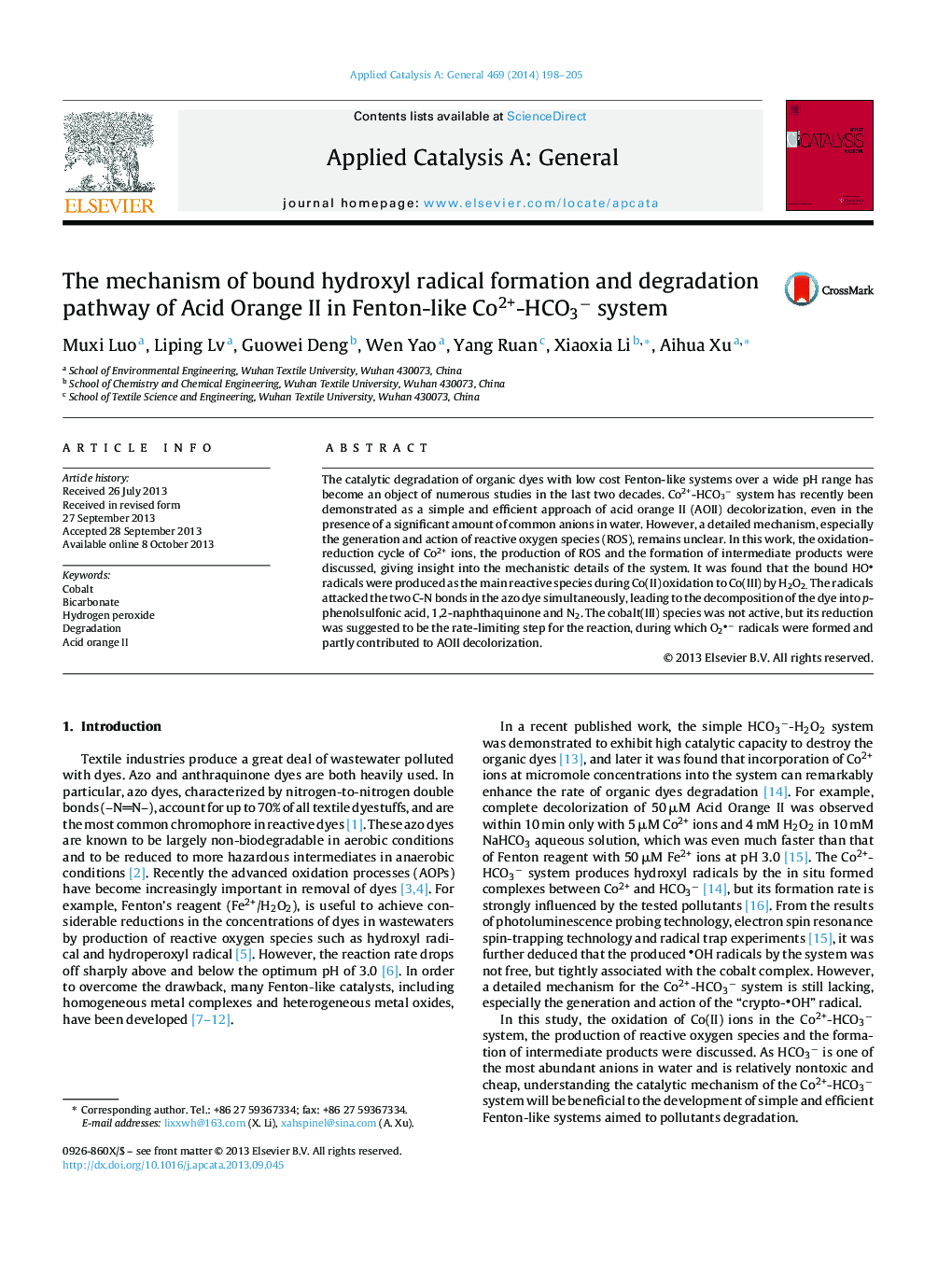| Article ID | Journal | Published Year | Pages | File Type |
|---|---|---|---|---|
| 40168 | Applied Catalysis A: General | 2014 | 8 Pages |
•Co(II) in the Fenton-like Co2+-HCO3− system can be easily oxidized to Co(III).•Reduction of Co(III) back to Co(II) is the rate-limiting step.•Bound hydroxyl radical is produced by the system.•The two C-N bonds in acid orange II are simultaneous cleaved.•The dye is decomposed into p-phenolsulfonic acid, 1,2-naphthaquinone and N2.
The catalytic degradation of organic dyes with low cost Fenton-like systems over a wide pH range has become an object of numerous studies in the last two decades. Co2+-HCO3− system has recently been demonstrated as a simple and efficient approach of acid orange II (AOII) decolorization, even in the presence of a significant amount of common anions in water. However, a detailed mechanism, especially the generation and action of reactive oxygen species (ROS), remains unclear. In this work, the oxidation-reduction cycle of Co2+ ions, the production of ROS and the formation of intermediate products were discussed, giving insight into the mechanistic details of the system. It was found that the bound HO radicals were produced as the main reactive species during Co(II) oxidation to Co(III) by H2O2. The radicals attacked the two C-N bonds in the azo dye simultaneously, leading to the decomposition of the dye into p-phenolsulfonic acid, 1,2-naphthaquinone and N2. The cobalt(III) species was not active, but its reduction was suggested to be the rate-limiting step for the reaction, during which O2− radicals were formed and partly contributed to AOII decolorization.
Graphical abstractFigure optionsDownload full-size imageDownload high-quality image (70 K)Download as PowerPoint slide
